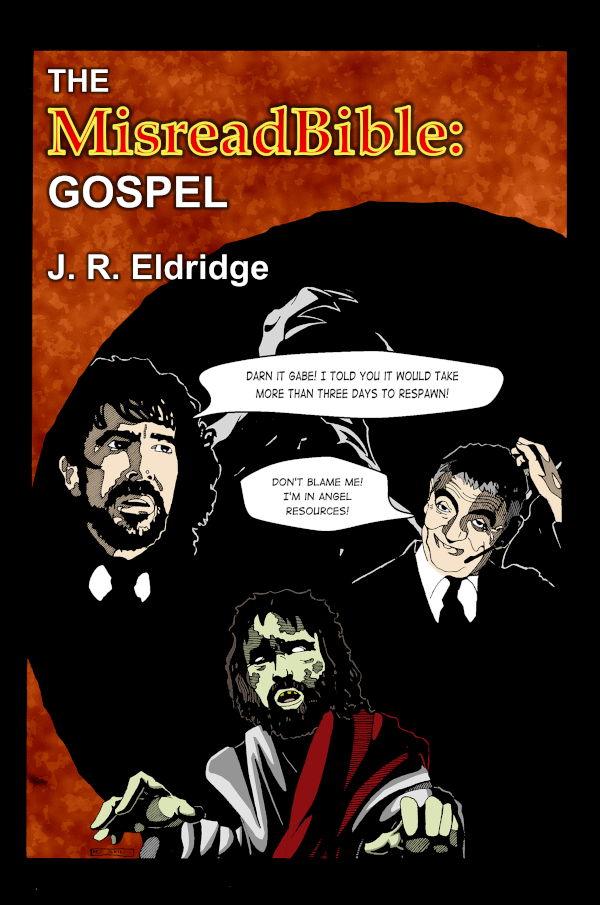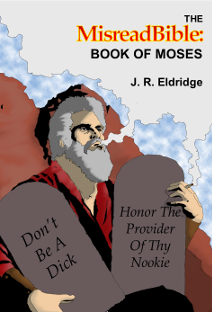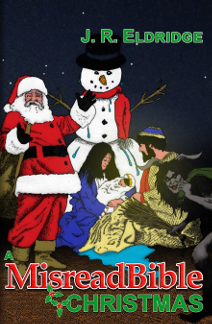The Man from Two Places
Imagine you were tasked with writing the definitive version of the gospel. You have some version of the Book of Mark available for a large chunk of the narrative, but it doesn’t include all of the new stories that have been floating around, such as Jesus’s post-resurrection appearances, and it also says nothing about his birth.
What’s more, despite the fact that Jesus is said to come from Nazareth in Galilee, there’s another tradition that says he was born in Bethlehem in Judaea. So, how can you incorporate this new tradition into the story and write the narrative of his birth in Bethlehem without contradicting the fact that he came from Nazareth?
Well, if you’re the author of Luke, you begin with Jesus’s parents living in Nazareth but invent a scenario that forces his mother to give birth in Bethlehem and return to Nazareth to raise him. On the other hand, if you’re the author of Matthew, you begin with the couple living in Bethlehem but invent a scenario that forces them to move to Nazareth after he’s born.
Luke's Nativity
The Gospel of Luke tells the story of a girl called Mary living in Nazareth who was betrothed to a man named Joseph. God sent an angel named Gabriel to tell her that she’d give birth to a son despite being a virgin.
Some time after this, the Romans decided to conduct a census, but for some strange reason, they told everyone to return to the town of their ancestors to register. Now, Joseph, the man to whom Mary was engaged, was a descendant of King David who was born in Bethlehem, so he took his pregnant wife and went to Bethlehem to register for the census.
Unfortunately, they couldn’t find a room for the night, and even more unfortunately, Mary went into labour, and thus, Jesus was born in Bethlehem, possibly in a stable (although it doesn’t explicitly say this), and placed in a manger where he was adored by some local shepherds.
After they’d waited a week for Mary to no longer be ‘ceremonially unclean’ from giving birth, they went to Jerusalem to offer a sacrifice, and on the eighth day, the baby was circumcised. After this, they returned to Nazareth.
Matthew's Nativity
Now, the author of Matthew came up with another way to resolve the issue. His story doesn’t mention Mary and Joseph living in Nazareth before Jesus’s birth. The first mention of a location is in Matthew 2:1 where it says that Jesus was born in Bethlehem, Judaea, so it’s reasonable to assume that in Matthew’s version, Joseph and Mary were living there to begin with.
Matthew’s account begins by saying that Joseph and Mary were pledged to be married, but when she became inexplicably pregnant, Joseph decided to divorce her. However, an angel visited him and assured him that the child was conceived via the Holy Spirit.
Some time after the child was born, some unspecified number of magi from the east turned up looking for the Messiah, and they inadvertently tipped off King Herod that a new king had been born. The magi visited Jesus and brought him gifts. Meanwhile, Herod, fearing that the newborn king would usurp his throne, sent his men out to kill all the boys aged two and under. Luckily, Joseph was warned about this in a dream, so he and Mary took the baby and fled to Egypt.
Once Herod was dead, an angel came to Joseph in a dream and told him the coast was clear. However, Herod’s son Archelaus was now king, and Joseph was afraid to return to Bethlehem, so, instead, he, his wife, and his son settled outside of Judaea in Nazareth, Galilee.
Bringing them together
These two authors found very different ways to reconcile the conflicting traditions and came up with unique stories. However, both accounts made it into the Bible and have added elements to the Nativity story.
So, the combined version of the story begins in Luke with Mary being visited by Gabriel and being told she’d have a baby. The narrative then switches over to Joseph’s angelic visitation in Matthew. As no location is mentioned at this point in the story, you can claim this took place in Nazareth so as not to contradict Luke. Turning back to Luke, the Roman census brings the couple down to Bethlehem where Mary gives birth in a stable, and the shepherds turn up to adore the baby.
Jumping back to Matthew, some magi from the east come searching for the newborn king, tip off Herod, and then bring the baby gifts of gold, myrrh, and frankincense. In modern retellings of the Nativity, the number of magi is usually given as three because they had three gifts, and they are called either wise men or kings. Also, their visitation is often depicted as concurrent with the shepherds’.
Now, here comes the tricky part. In Luke, the couple observed the ritual purification week, had Jesus circumcised on the eighth day, and then returned home to Nazareth, but in Matthew, they went to Egypt once the magi had left, and it was only after Herod died that they settled in Nazareth. The easiest way to resolve this contradiction is to ignore it by including only one of the endings or leaving them off completely. I mean, it’s much more pleasant to end with the happy couple being brought gifts than it is to have them fleeing from an infanticidal killing spree, right?





